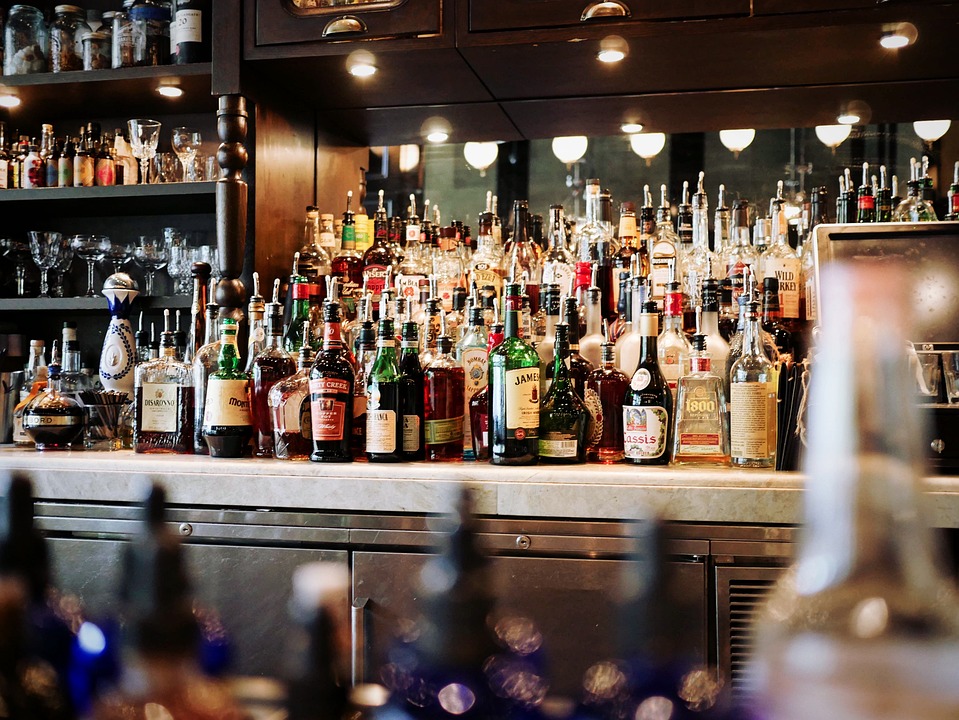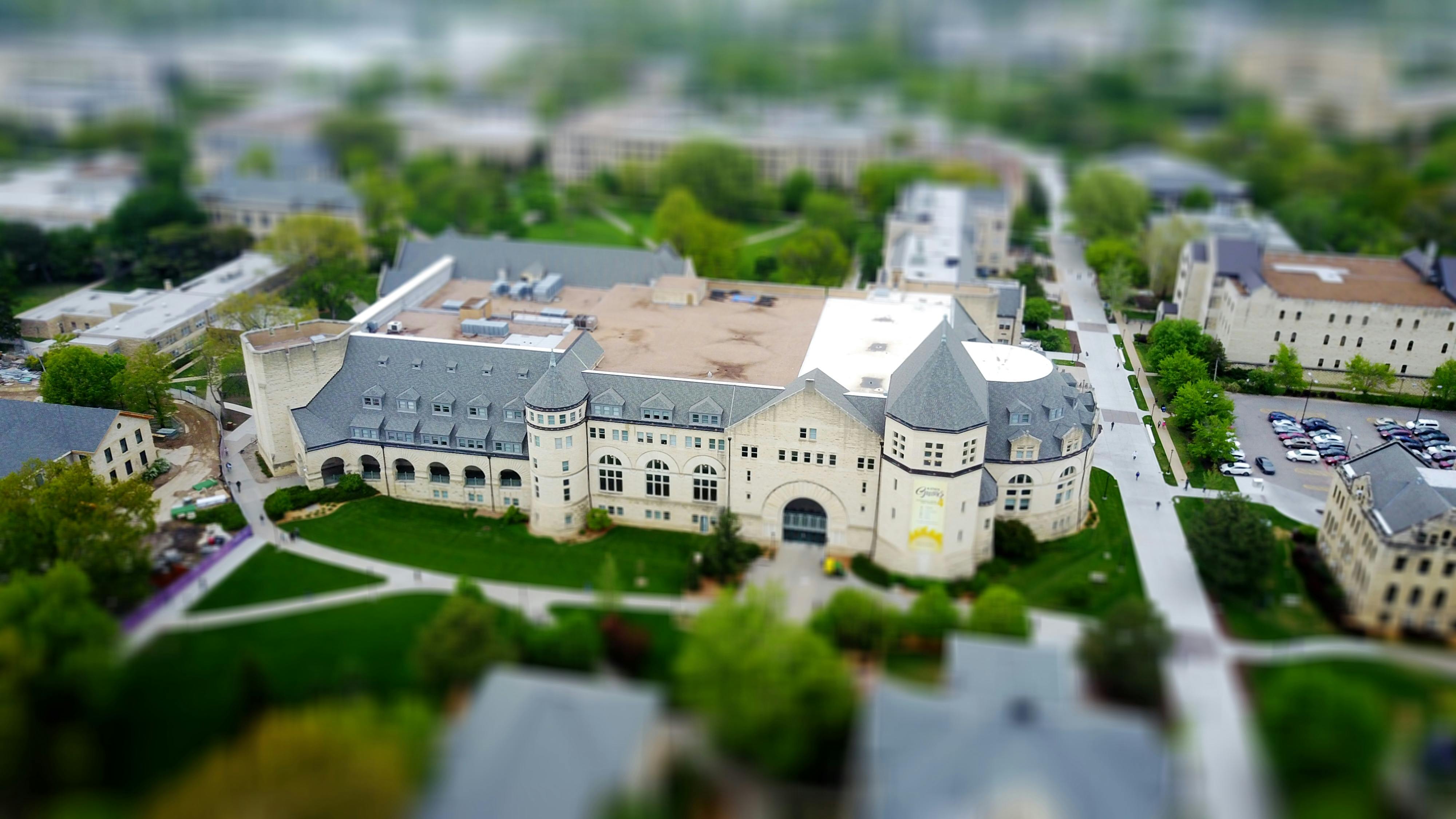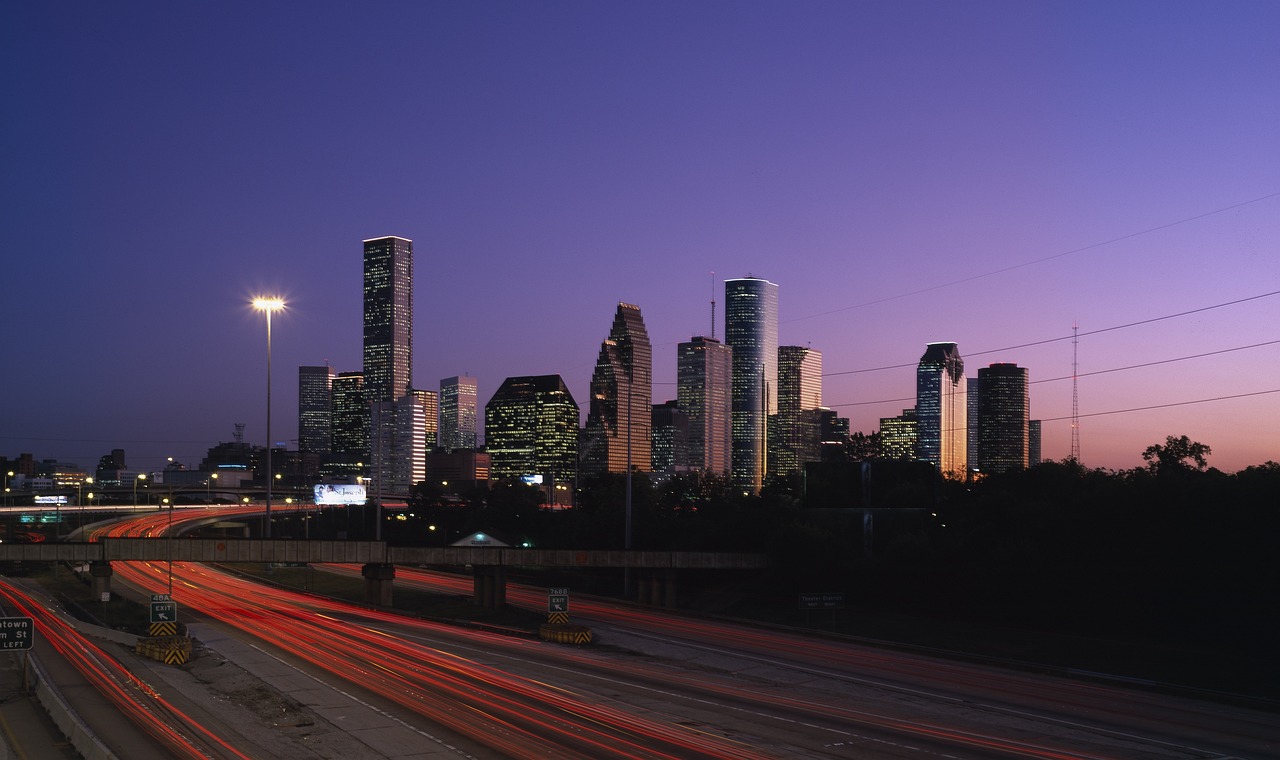Houston, the nation’s fourth largest city, is known for its thriving energy industry, world-class medical centre and multiculturalism. However, some neighbourhoods in this vibrant city have long been plagued by high crime rates. Based on the Houston Police Department’s latest 2023 crime data and community safety assessment report, we’ve compiled the top 10 neighbourhoods where the current state of law and order is of the utmost concern. These areas generally face multiple challenges such as gang violence, drug dealing, and property crimes, and their crime rates far exceed the citywide average. In this article, we will analyse the specifics of each neighbourhood in detail, including the distribution of crime types, the reasons for the high incidence of crime, and the current situation of residents’ lives, so as to help readers get a comprehensive picture of Houston’s urban safety.
10 Worst Neighborhoods in Houston
1. Sunnyside
Sunnyside is located in south Houston and is one of the WORST neighbourhoods in Houston. It has long been the city’s most dangerous neighbourhood in Houston. This historic African American community faces multiple challenges, such as systemic poverty, aging infrastructure, and a lack of social services. This historic African American community faces multiple challenges, including systemic poverty, aging infrastructure, and a lack of social services. More than 35 per cent of the community’s residents live below the poverty line, and the unemployment rate is 18 per cent, well above the citywide average. Abandoned homes and commercial buildings have become hotbeds of criminal activity, where gangs divide their spheres of influence and drug dealing takes place almost openly. Particularly worrying is the problem of juvenile delinquency, with many young people dropping out of school early and becoming involved in criminal activity due to a lack of educational resources. Police figures show that Sunnyside’s violent crime rate is four times the citywide average, and residents live with a constant sense of insecurity, afraid to walk the streets alone even during the day.
Violent crime rate: 56.2 per 1,000 residents
- Shootings: 68% of violent crimes
- Armed robbery: 22 per cent
- Aggravated assault: 10 per cent
Property crime rate: 102.3 per 1,000 residents
- Burglary: 58 per cent
- Motor vehicle theft: 27 per cent
- Other thefts: 15 per cent
Drug offences: 31.5 per 1,000 inhabitants
- Cocaine-related: 48 per cent
- Heroin-related: 25 per cent
- Methamphetamine-related: 18 per cent
Other drugs: 9 per cent
2. MacGregor
The MacGregor neighbourhood, situated south of downtown Houston, is one of the city’s most troubled areas, adjacent to the prestigious Texas Medical Center, and is ostensibly a quiet residential area, but in fact harbours serious policing problems. Crime in this neighbourhood has its own peculiarities: while the daytime seems to be calm, the nighttime becomes a time of high crime. There is a clear economic stratification in the neighbourhood, with a mix of middle-class homes and low-income flats, and this mix leads to unique crime patterns. Burglary and auto theft are particularly prevalent, with criminals often targeting the homes of professionals working in the medical centre. Even more worrisome is the fact that it is becoming a staging area for the illegal trade in prescription drugs, and the close association with the Medical Centre makes it relatively easy to obtain controlled substances, making it a dangerous neighbourhood in Houston. Residents of the neighbourhoods have reported that, while shootings are not as frequent as in other high-risk neighbourhoods, property crime has become almost a part of everyday life, and many people have developed the habit of locking doors multiple times and installing surveillance.
Violent crime rate: 32.8 per 1,000 residents
- Robbery: 55 per cent of violent crimes
- Assault: 35 per cent
- Sexual offences: 10 per cent
Property crime rate: 145.6 per 1,000 inhabitants
- Residential burglary: 62 per cent
- Auto theft: 25 per cent
- Commercial burglary: 13 per cent
Drug offences: 18.7 per 1,000 residents
- Prescription drug abuse: 65 per cent
- Marijuana dealing: 20 per cent
Other drugs: 15 per cent
3. Sharpstown
The Sharpstown neighbourhood, located in south-west Houston, was once a middle-class enclave, but is now dangerous neighbourhoods in houston. the neighbourhood is unique in that it faces the twin challenges of high-end white-collar crime and street violence at the same time. With the onslaught of the financial crisis in 2008, the area suffered a severe economic downturn and a large number of commercial facilities were left vacant, making it an ideal location for illegal activities. By day, a variety of financial scams and pyramid schemes operate here, specifically targeting the elderly and new immigrants; by night, the streets are dominated by drug dealers and prostitutes. Converted underground casinos and money changers in the neighbourhood have become centres for money laundering, and police have discovered in recent years that a number of sophisticated cybercrime cases have originated in the area. Residents live in a constant state of unrest, guarding against both street violence and various fraudulent schemes.
Economic crime rate: 42.3 per 1,000 inhabitants
- Financial fraud: 65 per cent
- Identity theft: 25 per cent
- Other fraud: 10 per cent
Violent crime rate: 38.5 per 1,000 inhabitants
- Drug-related violence: 60 per cent
- Robbery: 30 per cent
- Other violence: 10 per cent
Property crime rate: 112.4 per 1,000 inhabitants
- Auto theft: 55 per cent
- Burglary: 35 per cent
- Commercial burglary: 10 per cent
4. Greenspoint
The community of Greenspoint, located in the north of Houston, was once known as the “northern gateway to Houston” and was a thriving commercial centre in the 1980s. However, with the oil crisis and the relocation of businesses, the area experienced a severe economic downturn. Today, the area around Greenspoint Mall is known as one of the worst neighbourhoods in Houston and is known locally as ‘Gunspoint’. The biggest problem facing the neighbourhood is the large number of vacant office buildings and commercial facilities that have become criminal hangouts. Gang activity is rampant, and the drug trade is widespread, especially as it has become an important distribution centre for Mexican drug cartels in north Houston. During the day, commuters can still be seen here, but at night, the streets are virtually controlled by criminals. Residents of the community report frequent car thefts and robberies, and many companies have had to provide special security for their employees. Even more worrisome is the fact that the area is gradually becoming a transit point for human trafficking, and the police have solved many related cases.
Violent crime rate: 49.3 per 1,000 inhabitants
- Armed robbery: 55 per cent
- Shootings: 35 per cent
- Sexual offences: 10 per cent
Property crime rate: 136.8 per 1,000 residents
- Auto theft: 65 per cent
- Commercial burglary: 25 per cent
- Residential burglary: 10 per cent
Drug offences: 27.6 per 1,000 inhabitants
- Cocaine dealing: 50 per cent
- Methamphetamine dealing: 30 per cent
- Other drugs: 20 per cent
5. Far North
The Far North neighbourhood, located in the northernmost part of Houston, typifies urban sprawl. The development of this area is riddled with contradictions: on the one hand, there are newly developed luxury neighbourhoods, and on the other hand, there are cheap flat blocks that are poorly managed. This extreme divide between rich and poor has led to unique crime patterns. The most prominent problem in the neighbourhood is the burglary gangs, which target high-end residential areas and use high-tech methods to break through security systems. Meanwhile, cheap flat blocks have become hotbeds of gang activity and drug dealing. Criminal activity is further fuelled by their suburban location, relatively weak police coverage, and long response times. Community residents report that while shootings are not as frequent as in downtown neighbourhoods, property crime is rampant, with almost every household experiencing a burglary.
Property crime rate: 158.2 per 1,000 residents
- Burglary: 70 per cent
- Auto theft: 25 per cent
- Other thefts: 5 per cent
Violent crime rate: 28.7 per 1,000 inhabitants
- Violence from burglary: 60 per cent
- Robbery: 30 per cent
- Other violence: 10 per cent
Drug offences: 15.3 per 1,000 inhabitants
- Marijuana dealing: 60 per cent
- Prescription drug abuse: 30 per cent
- Other drugs: 10 per cent
6. Northeast
The Northeast neighbourhood was once an important industrial area of Houston, but with the out-migration of the manufacturing industry, the economy of the area has floundered. Today, abandoned factories and warehouses serve as havens for a variety of criminal activities. The most serious problem in this neighbourhood is gang violence, with at least seven active gangs vying for territory and control, making it one of the most dangerous neighbourhoods in Houston. drug dealing is intertwined with illegal weapons trafficking, leading to frequent shootings. The community lives in fear, with many families choosing to move away, leaving behind mostly low-income groups who cannot afford to relocate. The education system has nearly collapsed, with high levels of violence in schools, further deteriorating the environment in which young people grow up. Police data show that the homicide clearance rate here is lower than the city average, in part because residents are reluctant to cooperate with investigations for fear of retaliation.
Violent crime rate: 61.5 per 1,000 residents
- Gang-related shootings: 75 per cent
- Drug-related violence: 15 per cent
- Other violence: 10 per cent
Property crime rate: 98.7 per 1,000 residents
- Commercial burglary: 60 per cent
- Auto theft: 30 per cent
- Residential burglary: 10 per cent
Drug offences: 34.2 per 1,000 inhabitants
- Heroin dealing: 50 percent
- Methamphetamine dealing: 30 per cent
- Other drugs: 20 per cent
7. Northwest
The Northwest neighbourhood, located in north-west Houston, is an ideal area for criminals because of its easy accessibility (close to several motorways). The community’s crime problem is unique: criminals are often not local residents and take advantage of the ease of transport to move around as they please. Auto theft is particularly prevalent, with organised gangs seeking out targets and then quickly fleeing via the motorway. Northwest is one of the worst neighbourhoods in Houston. It is also an important supplier to the Houston area’s black market in auto parts. Residents of the community report that while there is relatively little traditional violent crime, property crime has become almost a part of everyday life. Many residents have had to install multiple anti-theft systems and even form neighborhood watch groups, with limited success.
Property crime rate: 167.3 per 1,000 residents
- Auto theft: 70 per cent
- Auto parts theft: 20 percent
- Other thefts: 10 per cent
Violent crime rate: 25.6 per 1,000 inhabitants
- Robbery: 60 per cent
- Violence caused by car theft: 30 per cent
- Other violence: 10 per cent
Drug offences: 12.8 per 1,000 inhabitants
- Marijuana dealing: 70 per cent
- Other drugs: 30 percent
8. East End
The East End community is one of the oldest neighbourhoods in Houston and has a rich historical and cultural heritage. However, in recent years, the neighbourhood has faced a serious problem of deteriorating law and order. With the rise in housing prices and gentrification, the original community structure has been broken down, leading to intensified social conflicts. The most prominent problem in the neighbourhood is the increasing number of street robberies and burglaries, making it one of the dangerous neighbourhoods in Houston; at the same time, it has also become a gathering place for illegal immigrants, with cases of human trafficking and labour exploitation occurring from time to time. Social tensions are exacerbated by the polarisation of the community: on one side, there is a middle- to high-income group that has just moved in, and on the other side, there is a low-income group that has been living there for a long time. Police enforcement faces language and cultural barriers, making it difficult to conduct in-depth investigations in many cases.
Violent crime rate: 38.9 per 1,000 inhabitants
- Street robbery: 65 per cent
- Domestic violence: 25 per cent
- Other violence: 10 per cent
Property crime rate: 123.5 per 1,000 inhabitants
- Residential burglary: 60 per cent
- Commercial burglary: 30 per cent
- Auto theft: 10 per cent
Human trafficking: 8.7 per 1,000 inhabitants
- Sexual exploitation: 70 per cent
- Labour exploitation: 30 per cent
9. Sugar Land
Sugar Land is located in the southwest suburbs of Houston, ostensibly an affluent suburban neighbourhood, but in fact one of the most dangerous neighbourhoods in Houston. The criminal activity in the neighbourhood is unique: more white-collar crime and organised financial crime, rather than street violence. Credit card fraud, identity theft, and cybercrime are particularly prevalent here, and criminals tend to target higher-income people in the community. Meanwhile, prescription drug abuse is a growing problem among youth, with children from affluent families having easier access to all types of drugs. While community residents do not have to worry about street violence, they must be constantly on the lookout for a variety of high-tech crime tactics. Police investigations face special challenges because these crimes often cross state and even national boundaries and require the involvement of federal law enforcement agencies.
Economic crime rate: 53.2 per 1,000 residents
- Identity theft: 50 per cent
- Financial fraud: 40 percent
- Other fraud: 10 per cent
Drug offences: 18.9 per 1,000 residents
- Prescription drug abuse: 80 per cent
- Other drugs: 20 per cent
Violent crime rate: 15.3 per 1,000 inhabitants
- Domestic violence: 70 per cent
- Other violence: 30 per cent
10. Pasadena
Pasadena, as a satellite city of Houston, has a crime problem that is closely linked to the industrial development of the area. The city, known for its petrochemical industry, faces unique security challenges: traditional street crime on the one hand, and industry-related economic crime on the other. Gang activity in the area is intertwined with industrial theft, with criminals specialising in stealing factory equipment and chemicals. At the same time, environmental pollution problems interact with crime problems, and low-income neighbourhoods are often also the most polluted areas. Community residents report that police resources are more focused on protecting industrial facilities, and the policing needs of ordinary residents are often overlooked. This unbalanced allocation of law enforcement resources further exacerbates the policing situation in certain communities.
Property crime rate: 142.6 per 1,000 residents
- Industrial burglary: 60 per cent
- Common theft: 40 per cent
Violent crime rate: 34.7 per 1,000 residents
- Gang violence: 50 per cent
- Robbery: 30 per cent
- Other violence: 20 per cent
Environmental crime rate: 12.5 per 1,000 inhabitants
- Illegal sewage: 70 per cent
- Other environmental crimes: 30 per cent
10 Safest Neighborhoods in Houston
| Rank | Community Name | Safety Index (100) | Violent Crime Rate (per 1,000) | Key Safety Features |
|---|---|---|---|---|
| 1 | West University | 92 | 3.1 | Near Rice University, 24-hour campus police patrol |
| 2 | Memorial | 90 | 3.5 | Gated community, private security team |
| 3 | Tanglewood | 89 | 3.8 | High-end residential area, 85% smart security adoption |
| 4 | River Oaks | 88 | 4 | Wealthy district, license plate recognition cameras fully installed |
| 5 | Piney Point | 87 | 4.2 | Low-density community, well-established neighborhood watch |
| 6 | The Woodlands | 86 | 4.5 | Planned community, violent crime decreased 15% over 5 years |
| 7 | Bellaire | 85 | 4.8 | Independent city, police response time <5 minutes |
| 8 | Kingwood | 84 | 5 | Forested community, night hiking patrol teams |
| 9 | Clear Lake | 83 | 5.3 | NASA employee community, extensive use of tech security |
| 10 | Sugar Land | 82 | 5.5 | High density of surveillance cameras, a largely Asian community |
How to Stay Safe in Houston
1. Know Dangerous Areas
Avoid high-crime neighborhoods like Sunnyside, Fifth Ward, and Greenspoint, especially at night. Use Houston PD’s crime map or apps like Citizen to check safety before visiting unfamiliar areas.
2. Be Smart with Transportation
Always lock your car and hide valuables—Houston has high auto theft rates. At night, use Uber/Lyft instead of walking or public transit in risky areas.
3. Stay Alert in Public
Walk confidently, avoid distractions (like phones), and trust your gut. If a place feels unsafe, leave. Stick to well-lit, busy areas after dark.
4. Secure Your Home
Install motion-sensor lights, cameras (like Ring), and strong locks. If renting, ask about security measures before moving in.
5. Watch for Scams
Skimming devices at gas stations and online sale scams are common. Use ATMs inside banks and meet buyers/sellers at police stations for transactions.
6. Prepare for Weather Risks
Flash floods happen fast—never drive through high water. In hurricane season (June–November), keep emergency supplies ready and know evacuation routes.
7. Party Safely
At bars or clubs, watch your drink and go with friends. Popular nightlife spots (like Washington Ave) can attract pickpockets—keep valuables close.
8. Save Emergency Contacts
Program 911, Houston PD’s non-emergency line (713-884-3131), and a trusted friend into your phone. Report suspicious activity via iWatchHouston.
Conclusion
An in-depth analysis of the 10 worst neighbourhoods in Houston reveals the complexity and diversity of crime problems. Each neighbourhood has its own unique historical background, socio-economic structure, and crime patterns, which require us to adopt differentiated governance strategies. Although some areas (e.g,. Greenspoint) have seen a downward trend in crime rates, overall safety enhancement still requires systematic governance and resource injection. It is hoped that through this detailed analysis, readers will have a clearer understanding of the security situation in each neighbourhood, which can be used as a reference for making decisions about living, investing, or travelling.
FAQ
What part of Houston has the highest crime rate?
In Houston, neighborhoods such as Sunnyside, MacGregor, and Sharpstown have the highest crime rates, with Sunnyside being the most dangerous, experiencing frequent violent crimes like homicides, assaults, and robberies.
What is the poorest neighborhood in Houston?
The neighborhood with the lowest median income in Houston is Sunnyside, specifically the 77051 ZIP code, with a median income of $27,500. This area faces significant economic challenges, including high poverty rates and limited access to resources. Efforts are underway to address these issues through community development and support programs
Is Houston's crime worse than Dallas?
No, Houston’s crime rate is higher than Dallas’s. As of 2024, Houston reported 1,148 violent crimes per 100,000 residents, while Dallas had 778 per 100,000 residents . Additionally, Houston’s overall crime rate is 56 per 1,000 residents, compared to Dallas’s 46 per 1,000 residents . Despite both cities experiencing crime rates above the national average, Houston’s rates are notably higher.
What is the bloody fifth ward in Houston?
The Fifth Ward in Houston, often called the “Bloody Fifth,” is a historically disadvantaged neighborhood known for high crime rates, gang activity, and violent incidents, although recent community efforts aim to improve safety and living conditions.
What is the safest area to live in Houston?
The safest areas to live in Houston include West University Place, Memorial, The Woodlands, Sugar Land, and Kingwood. These neighborhoods are known for their low crime rates, strong community engagement, and excellent amenities.
Why is Alief called the SWAT?
The term “SWAT” in reference to Alief, a neighborhood in southwest Houston, is a colloquial nickname that emerged in the late 1990s. During this period, Alief experienced a significant increase in gang activity and violent crime, leading to a heightened presence of the Houston Police Department’s Special Weapons and Tactics (SWAT) team in the area.
What is the nicest part of Houston?
The nicest part of Houston is generally considered to be West University Place and River Oaks, known for their upscale homes, well-maintained streets, excellent schools, low crime rates, and proximity to downtown amenities, making them highly desirable residential areas.







